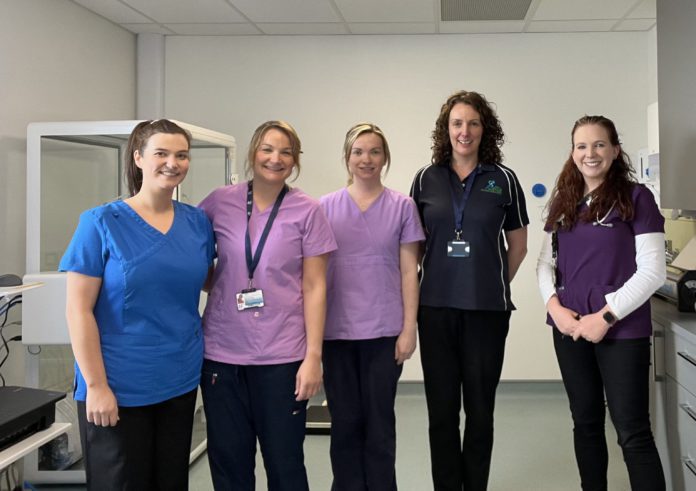A new “one stop shop” for patients with asthma and COPD has opened its doors in the Moycullen Primary Care Centre.
This clinic ensures that patients can access a consultant, a Clinical Nurse Specialist, Physiotherapist and Respiratory Physiologist and receive a diagnosis all on the same visit.
The clinic has seen 60 patients since opening in late April, reducing the need for people to attend hospital clinics. Optimising their lung condition in the community is also reducing hospitalisations related to these conditions.
“The goal of this clinic is to provide comprehensive care for patients who have symptoms suggestive of asthma or COPD,” said Denise Dunne, Operational Lead for the Integrated Care Programme for the Prevention and Management of Chronic Disease (ICPCD) in Galway City.
“The new clinic is equipped with the latest diagnostic technologies and is staffed by a specialist team of highly experienced respiratory specialists, dedicated to offering personalised, individualised effective treatment plans for each individual patient.”
The clinic is revolutionising the way respiratory care is delivered in the local community by leveraging diagnostic tools, including lung function testing to accurately identify and diagnose various respiratory conditions including COPD and Asthma.
These technologies enable the clinic’s team of respiratory experts to detect lung conditions early, design targeted treatment plans, monitor patient progress and enrol patient on pulmonary rehabilitation; resulting in improved patient outcomes and a higher quality of life.
“We are excited to bring this “one stop shop” respiratory clinic to our community patients;” said Dr Sinead Walsh, Respiratory Consultant aligned to the Integrated Care Hub Galway City.
The clinic’s opening is a significant milestone in the roll out of the Enhanced Community Care (ECC) programme in the West, which is jointly governed by the Saolta University Health Care Group and Community Healthcare West (CHW).
The programme is enhancing and increasing community health services and reducing pressure on hospital services. This means more services closer to where people live. Especially for older people and people with chronic disease.










